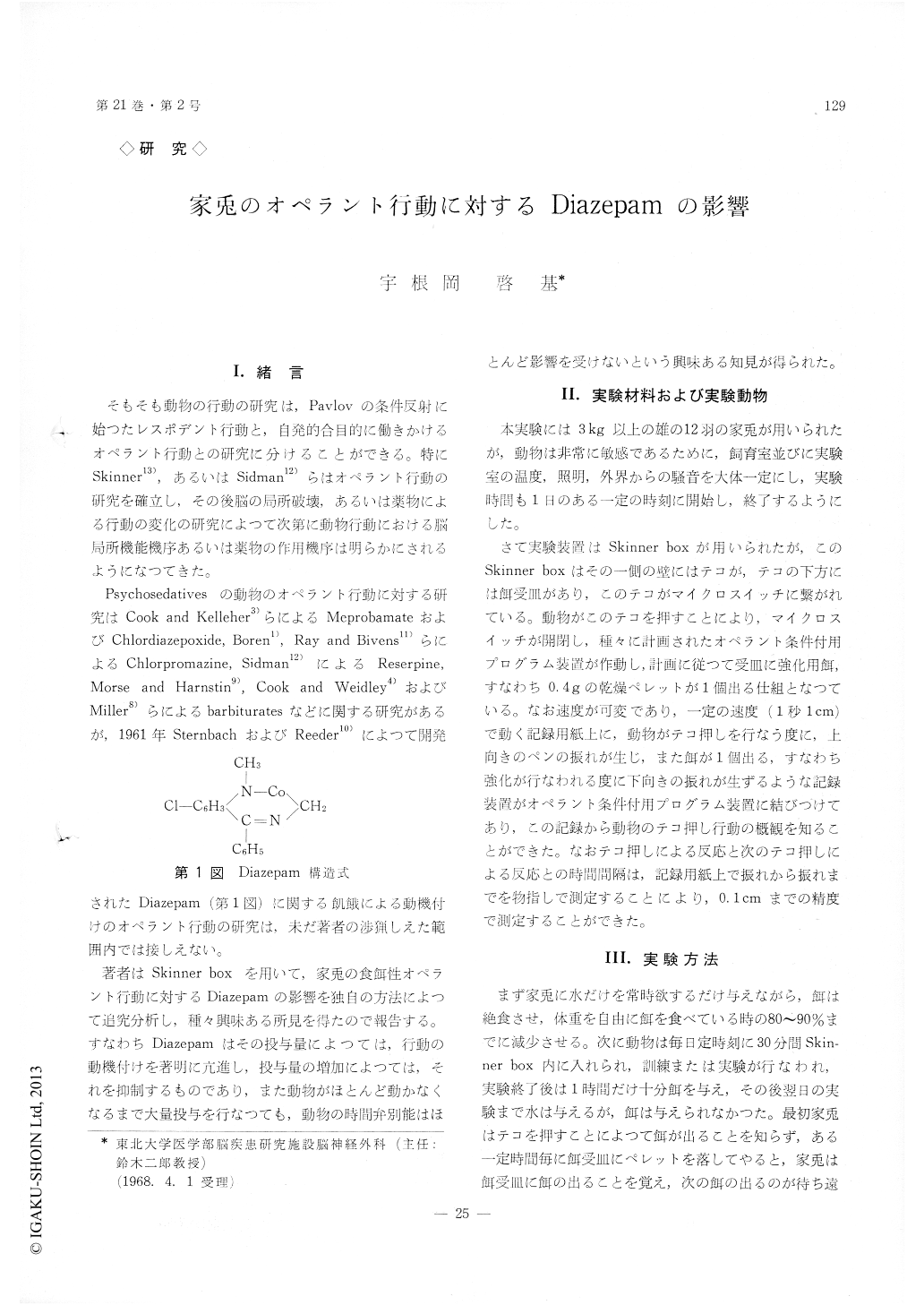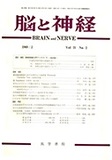Japanese
English
- 有料閲覧
- Abstract 文献概要
- 1ページ目 Look Inside
I.緒言
そもそも動物の行動の研究は,Pavlovの条件反射に始つたレスポデント行動と,自発的合目的に働きかけるオペラント行動との研究に分けることができる。特にSkinner13),あるいはSldman12)らはオペラント行動の研究を確立し,その後脳の局所破壊,あるいは薬物による行動の変化の研究によつて次第に動物行動における脳局所機能機序あるいは薬物の作用機序は明らかにされるようになつてきた。
Psychosedativesの動物のオペラント行動に対する研究はCook and Kelleher3)らによるMeprobamateおよびChlordiazepoxide, Boren1), Ray and Bivens11)らによるChlorpromazine, Sidman12)による Reserpine,Morse and Harnstin9), Cook and Weidley4)およびMiller8)らによるbarblturatesなどに関する研究があるが,1961年SternbachおよびReeder10)によつて開発されたDiazepam (第1図)に関する飢餓による動磯付けのオペラント行動の研究は、未だ著者の渉猟しえた範囲内では接しえない。
1) Rabbits were trained to press a bar for food reward on DRL 10 sec schedule. After 20-30 sessions, the animal reached a bar-press specific to the sche-dule. Then, the following statistical analysis was made.
2) The inter-response time (IRT) distribution showed bimodal with one mode occurred at a range in the vicinity of 10 sec (the second mode).
3) Probability of bar pressing as a function of time after the food reward was calculated (OFT-histogram).
The probability was high at 0-3 sec after the food reward (the first peak), lower at 3-5 sec after the reward and thereafter gradually became higher (the second peak).
4) A small dosis of Diazepam given intramus-cularly made the height of the first mode in IRT-distribution higher without any observable change in the second mode. Simultaneously, the first peak in the PRT-histogram became higher.
5) A large dosis of Diazepam made the height of the first mode lower as compared with the ones in IRT distribution of the preceding day. The second mode also decreased in the height, but still remained at a range in the vicinity of 10 sec. A broader IRT-distribution appeared. The first peak in the PRT-histogram failed to change in amplitude.
6) Above-mentioned findings were discussed in terms of motivation and time discrimination behavior of the animal.

Copyright © 1969, Igaku-Shoin Ltd. All rights reserved.


